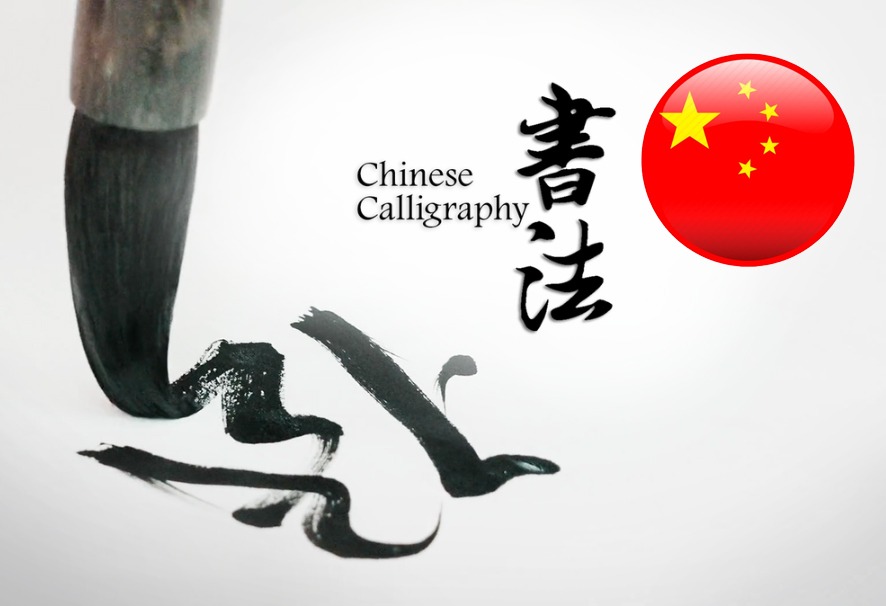Chinese Calligraphy: A Window into the Soul of Chinese Culture

Chinese calligraphy is more than a method of writing; it is the embodiment of the nation’s cultural heritage, philosophy, and artistic expression. For thousands of years, calligraphy has shaped Chinese civilization, bridging language and aesthetics, art and philosophy, and past and present. Its flowing brushstrokes are not just lines on paper; they are carriers of history, reflections of inner character, and symbols of the harmony and balance that define Chinese culture. In understanding Chinese calligraphy, one gains a deeper appreciation of the soul of China.
The roots of Chinese calligraphy stretch back over 3,000 years, intertwining with the development of Chinese characters themselves. Early inscriptions found on oracle bones during the Shang Dynasty (c. 1600–1046, BCE) were initially a means of record-keeping and communication. Over time, these characters evolved into a sophisticated visual language, with beauty and rhythm becoming as important as meaning.
Throughout history, different dynasties developed distinctive calligraphic scripts, each reflecting the social and aesthetic ideals of the time. The five primary scripts—seal (zhuanshu), clerical (lishu), regular (kaishu), semi-cursive (xingshu), and cursive (caoshu)—represent milestones in Chinese cultural development. For example, the small seal script of the Qin Dynasty unified written communication across the empire, while the regular script of the Wei and Jin dynasties emphasized symmetry and order, earning the title of the “model” for writing. These scripts not only facilitated communication but also expressed the intellectual and emotional life of the Chinese people. What sets Chinese calligraphy apart from ordinary writing is its transformation into a true art form. By the time of the Eastern Han Dynasty (25-220 CE), the invention of paper and the refinement of brushes, collectively known with ink and inkstone as the “Four Treasures of the Study,” allowed calligraphy to flourish as a visual and expressive art. Masters such as Wang Xizhi, often hailed as the “Sage of Calligraphy,” elevated brushwork into a realm of elegance and spirituality. His famed work, The Orchid Pavilion Preface (Lan Ting Xu), remains one of the most celebrated pieces in the history of Chinese art, admired for its flowing rhythm and emotional depth.
Chinese calligraphy is deeply intertwined with the core aesthetic and philosophical values of Chinese culture. It is influenced by the ethical values of Confucianism, Taoism, and Buddhism, reflecting ideals such as harmony, balance, and respect for tradition. In traditional Chinese society, calligraphy was regarded as the highest of the arts, influencing not only painting but also architecture, sculpture, and garden design. The arrangement of pavilions, the flow of pathways, and the balance of elements in classical gardens all reflect the rhythmic principles of calligraphic composition. This unique integration of writing and aesthetics demonstrates why calligraphy is often called “the soul of Chinese fine arts.”
A Path to Understanding Chinese Culture
Beyond its artistic value, calligraphy has long served as an important bridge for cultural exchange. Since the Tang Dynasty (618-907), when Chinese culture flourished internationally, calligraphy has traveled across borders as a symbol of China’s intellectual and artistic sophistication. Foreign envoys, scholars, and monks often carried calligraphic scrolls as gifts, spreading the beauty of Chinese characters throughout East Asia and beyond. Today, exhibitions like “Calligraphic Time and Space: Abstract Art in China” and initiatives under the theme “Culture for Harmony” reflect how calligraphy continues to promote cross-cultural dialogue. Its visual abstraction and rhythm resonate even with audiences unfamiliar with Chinese characters, aligning with the United Nations’ advocacy for the harmonious coexistence of different cultures. Foreigners participating in calligraphy workshops in cities like Shanghai and Beijing often describe the experience as a meditative journey into Chinese thought, linking cultural appreciation with hands-on engagement.
For learners of the Chinese language and culture, calligraphy offers more than artistic training; it provides a direct connection to traditional values and historical continuity. Mastering even the basics of regular script (kaishu) introduces students to the discipline, patience, and respect for structure that underpin Chinese society. Through the practice of brushwork, learners experience concepts like filial piety, humility, and harmony celebrated in classical teachings.
Moreover, calligraphy education fosters cultural literacy. By copying ancient texts, students engage with classical literature and philosophical works, thereby deepening their understanding of historical narratives and moral ideals. This combination of intellectual and artistic cultivation exemplifies the holistic nature of traditional Chinese learning. Despite the march of technology and the dominance of digital communication, Chinese calligraphy continues to hold relevance in modern life. For example, during the Spring Festival, couplets, wedding banners, and commemorative plaques are still inscribed with hand-brushed characters, linking daily practices to ancient traditions.
Many foreign enthusiasts have embraced calligraphy as a gateway to understanding Mandarin culture. Students from all over the world attend workshops to learn the correct way to hold a brush, practice the eight fundamental strokes, and experience the philosophy behind each character. Some even achieve remarkable skill; writing characters that approach the elegance of native calligraphers demonstrates how calligraphy transcends language barriers to foster mutual respect and appreciation. In 2008, Chinese calligraphy was listed as a national intangible cultural heritage, and in 2009, it was inscribed on UNESCO’s Representative List of the Intangible Cultural Heritage of Humanity, affirming that calligraphy is not only a Chinese treasure but also a contribution to the cultural diversity.
Calligraphy’s endurance as an art form reflects the timelessness of Chinese civilization and embodies the fusion of practicality and beauty, history and philosophy, and individuality and universal harmony. Chinese calligraphy is a living testimony to the elegance, wisdom, and continuity of Chinese culture. People not only learn to write Chinese characters but also gain a deeper understanding of the values, aesthetics, and spirit that have guided Chinese civilization for millennia.


